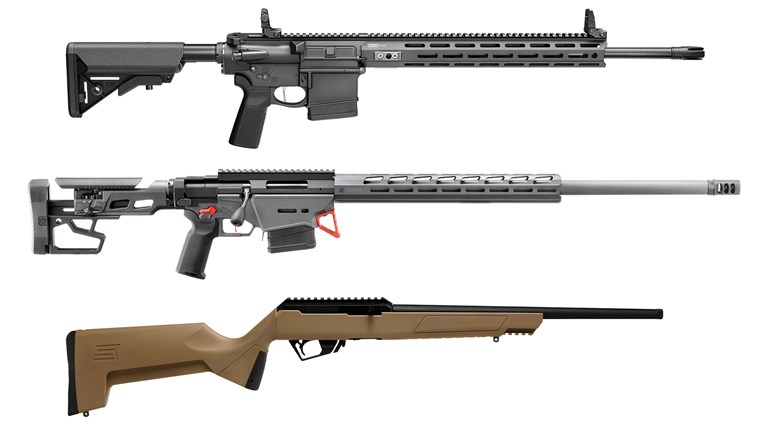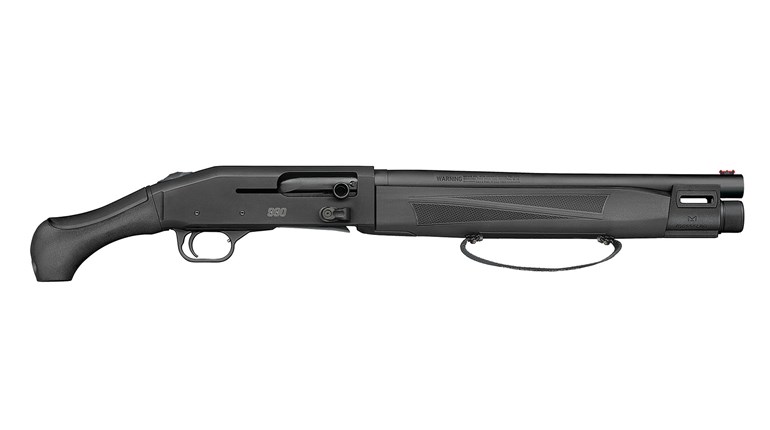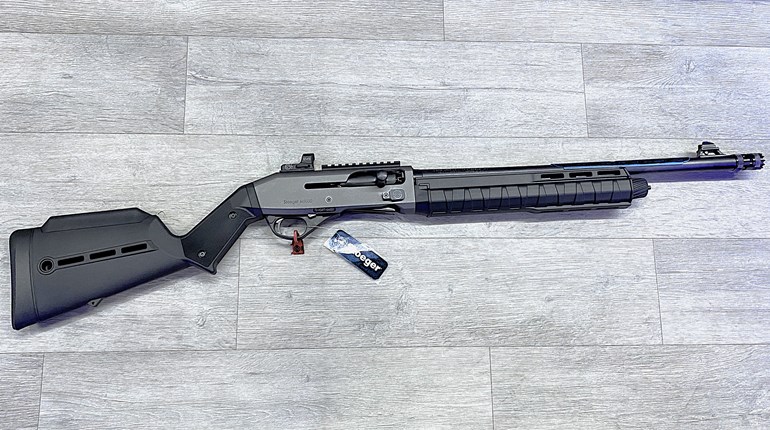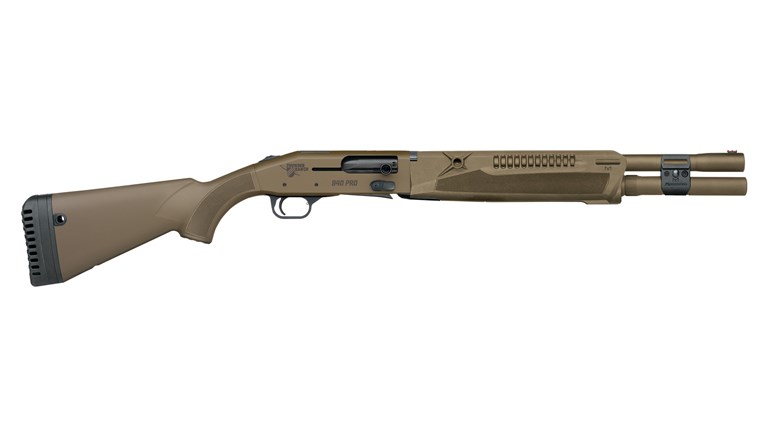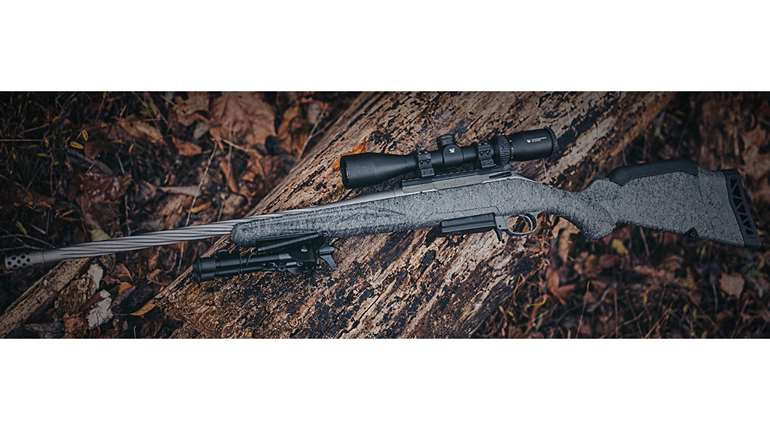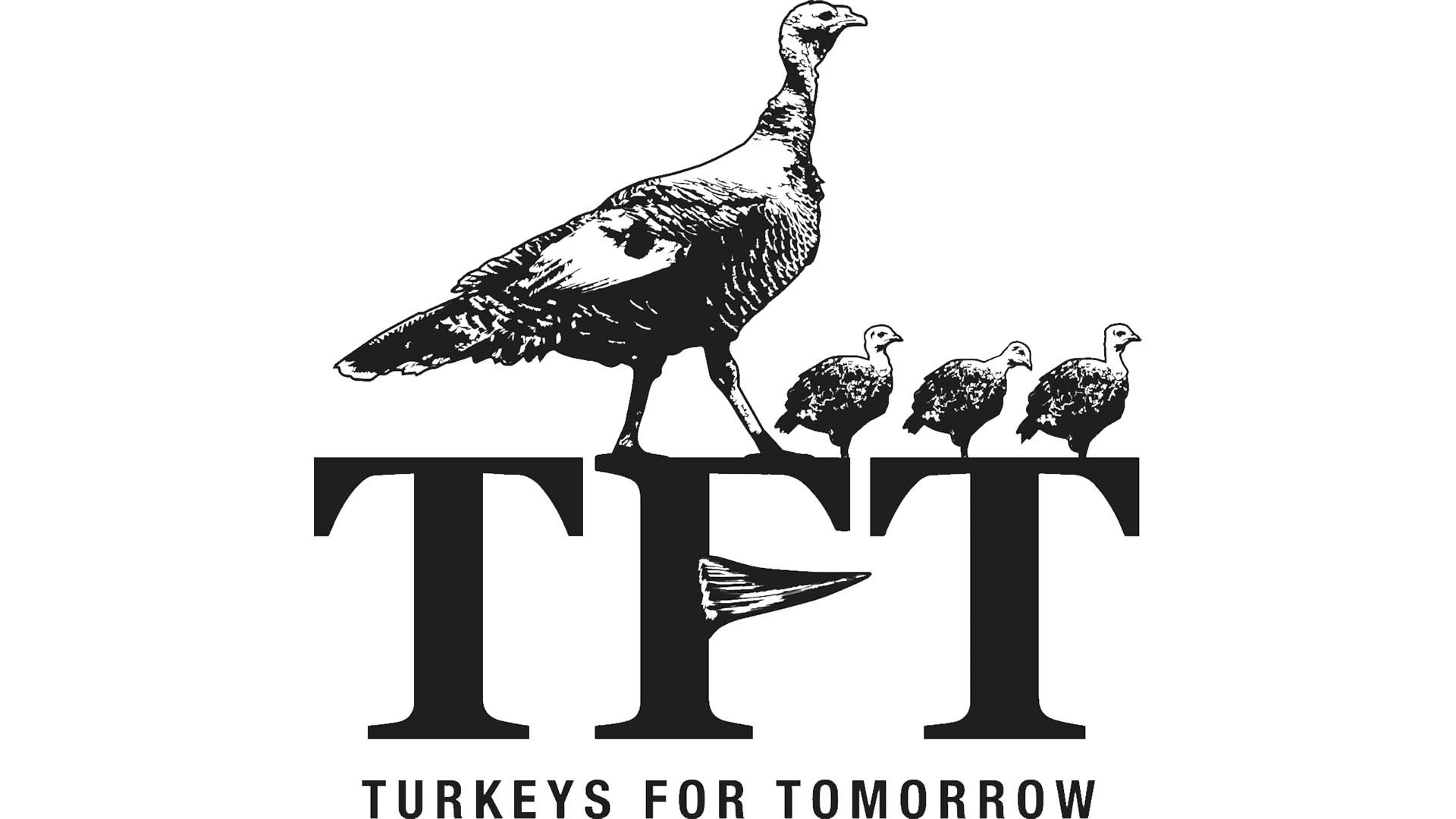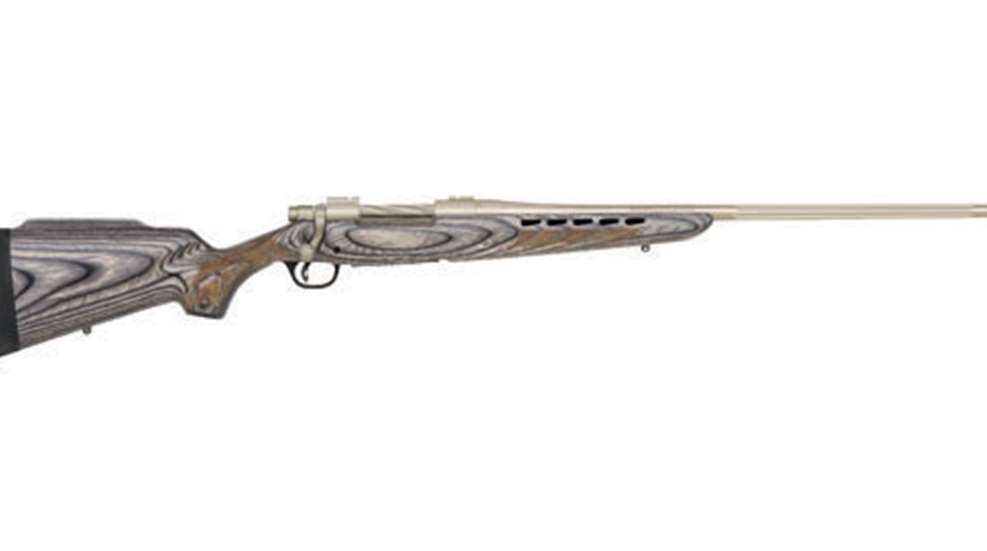
Mossberg. The name tends to conjure images of SWAT teams in full riot gear or stock-less pump shotguns used for self-defense. On a recent hunt, however, the name Mossberg became synonymous with the drastically different image of New Mexico’s rolling plains and deep canyons. The scenery was as diverse as the images the name Mossberg conjured in my mind.
The premise of the trip was simple: hunt bear and antelope in New Mexico with Mossberg rifles in a choice of calibers and options. I opted for the Mossberg 4X4 platform in .300 WSM for its flat-shooting capabilities and hard impact at long range. Topped with a Nikon Monarch and using 180-grain Winchester Ballistic Silver Tip ammo, there was no doubt the rifle would do its job—if I hit where I was aiming.
With a laminate stock and fluted barrel, the rifle appeared more like a custom firearm than the stock factory version I had in my hands. The tapered fore-end is vented to reduce weight and dissipate heat, and has a flatter surface, making it easier to grip for off-hand shots as well as resting from a fixed position. The grip is cut low with contours specifically designed for your thumb, making it easy to get your hand in the correct position for a crisp trigger pull. The raised Monte Carlo cheek piece on the stock ensures almost a perfect scope lineup on every shot.
Other features include a free-floating barrel and the patented LBA Trigger system. The LBA system uses a trigger blade to reduce creep, and the trigger itself is adjustable from 2 to 7 pounds, with just a simple turn of a screw. I left mine at the factory setting—about 3 pounds—and was surprised by the crisp pull. The trigger assembly is machined from aircraft-grade aluminum and then hard-coat anodized.
Mossberg is a relative newcomer to the center-fire scene, only producing rifles for the past seven or eight years. In that time, however, they have proved that a great rifle doesn’t have to cost as much as a new transmission.
"A lot of people don’t think about Mossberg and center-fire rifles, but we’ve been making centerfire rifles since about 2004 or 2005," said Linda Powell, director of media relations for Mossberg. "The 4X4 platform is one step up from what might be considered as our entry-level ATR model, and you get more features and caliber offerings in the 4X4 platform. The ATR only goes up to .30-06, whereas, when you move into the 4X4 platform, you get everything from .22-250 Rem. to .338 Win. Mag. You can also add the options of a laminate stock and Marinecote, which is our proprietary finish. Our barrels are carbon-steel, but they’re completely coated with the Marinecote, so the barrels are protected from the elements. And if you’re not great on maintenance, it definitely helps."
Once on the range the rifle became even more impressive and outperformed its looks. Straight out of the box my 4X4 was sub-MOA at 100 yards. A few clicks of the scope and there was no doubt I had a killing machine on the Lead Sled. For testing, I put 12 rounds through the rifle as quickly as possible, and the two box-style magazines holding three rounds each made for quick follow-up shots. The results sealed my opinions that the rifle was as well made as its custom brethren when it held the sub-MOA groups even after 12 rapid shots through a hot barrel.
Field-testing the rifle was simple: just hunt. A quick shot at the range affirmed that my scope hadn’t been knocked around by TSA on the trip. Now it was time to see if the rifle performed in the field as well as it did on the range. On the first night, I sat on the rim rock of a steep canyon, glassing the bottoms for black bear. The rocks provided great rests and the flatter bottom of the fore-end allowed for easy placement on the rocks I was using for a rest. There wasn’t any side-to-side movement while on rest, even without using my left hand as leverage.
For the next six days I put the rifle through the ultimate field test. I loaded and unloaded it no fewer than 150 times while getting in and out of trucks to stalk antelope, and the canyons provided the perfect opportunity to test how well the rifle held up on long walks. The dust from the prairies, as expected, dirtied up every spot on the rifle, yet the bolt worked as smoothly on the last day of the hunt as it did on the first. There was even some rain to contend with on our first day and the Marinecote finish on the barrel kept the rust at bay without a cleaning. In fact, I left the rifle in the case for three weeks after arriving home and it looked just as dirty – without any rust – as it did when I packed away for the trip home.
"Marinecote is a proprietary process developed by Mossberg that includes a nickel-plating aspect and a two-part protective powder coat, providing enhanced corrosion and scratch resistance," Powell said. "The barrel and interior steel parts feature Marinecote, while the exterior receiver has a two-part protective powder coat. Both finishes provide enhanced protection from the elements and chemicals."
The best part about Mossberg rifles—besides accuracy and features—is the price. Depending on the model, the rifles range from under $400 for the ATR platform, to less than $700 for the 4X4 model with all the added options.
There’s no doubt that Mossberg is on the upswing of rifle manufacturing, and it’s hard to believe they can improve on what they’re already offering. Still, I’ve been assured there are new models on the horizon that expand on current platforms. If you’re in the market for a new rifle and don’t want to take out a loan to get it, take a look at Mossberg.
Technical Specifications:
Manufacturer: O. F. Mossberg & Sons Inc., (203) 230-5300
Model: 4X4
Caliber: Varies
Barrel: 24 inches, 1:10 RH twist, fluted, button rifled, free-floating
Overall Length: 46 inches
Overall Weight: 7.5 pounds
Sights: Weaver-style bases.
Action: Bolt-action, repeating
Total capacity: 3 + 1, box-style magazine
LOP: 13.25 inches
Barrel Finish: Marinecote
Stock: Laminate, Classic Style
Suggested Retail Price: $673












